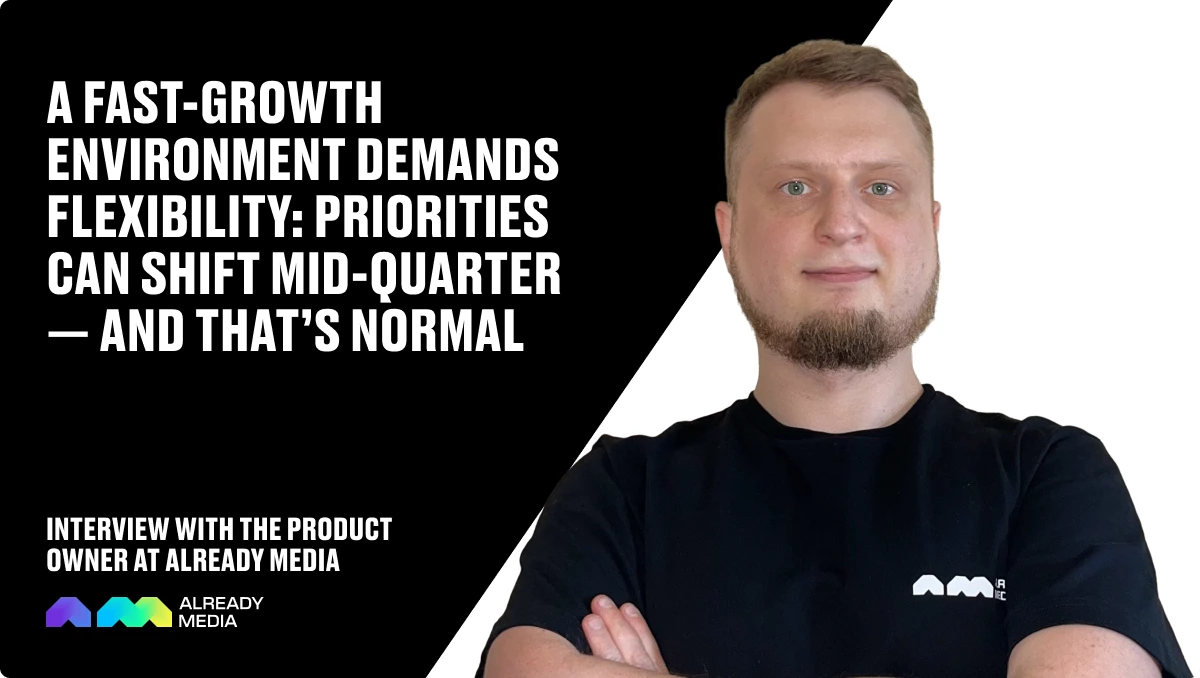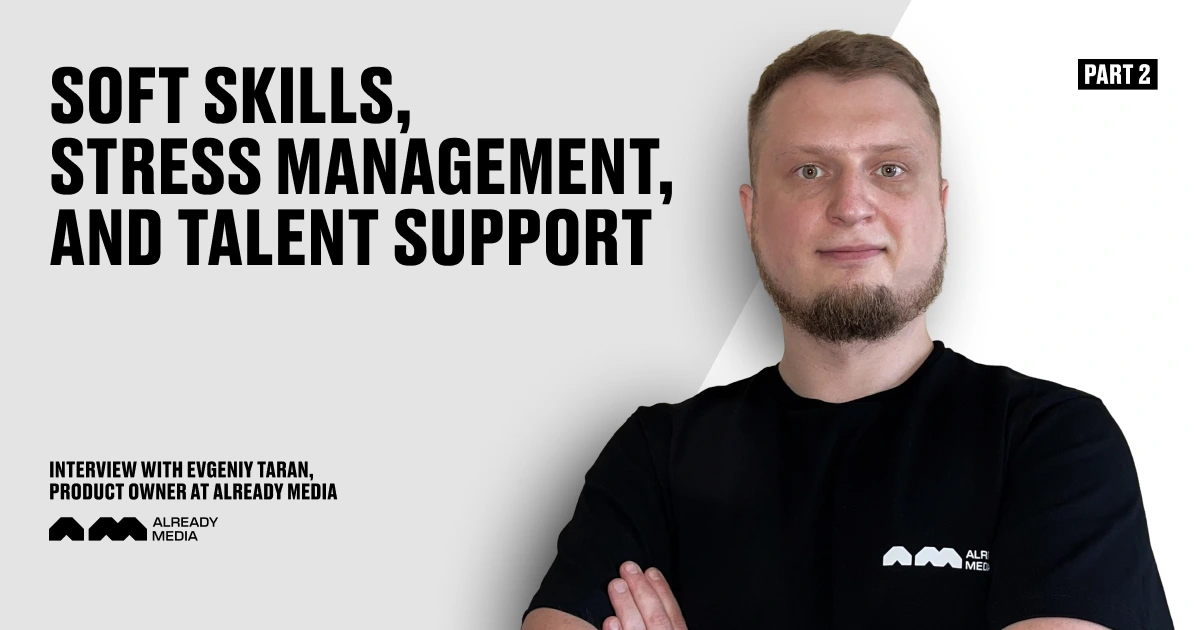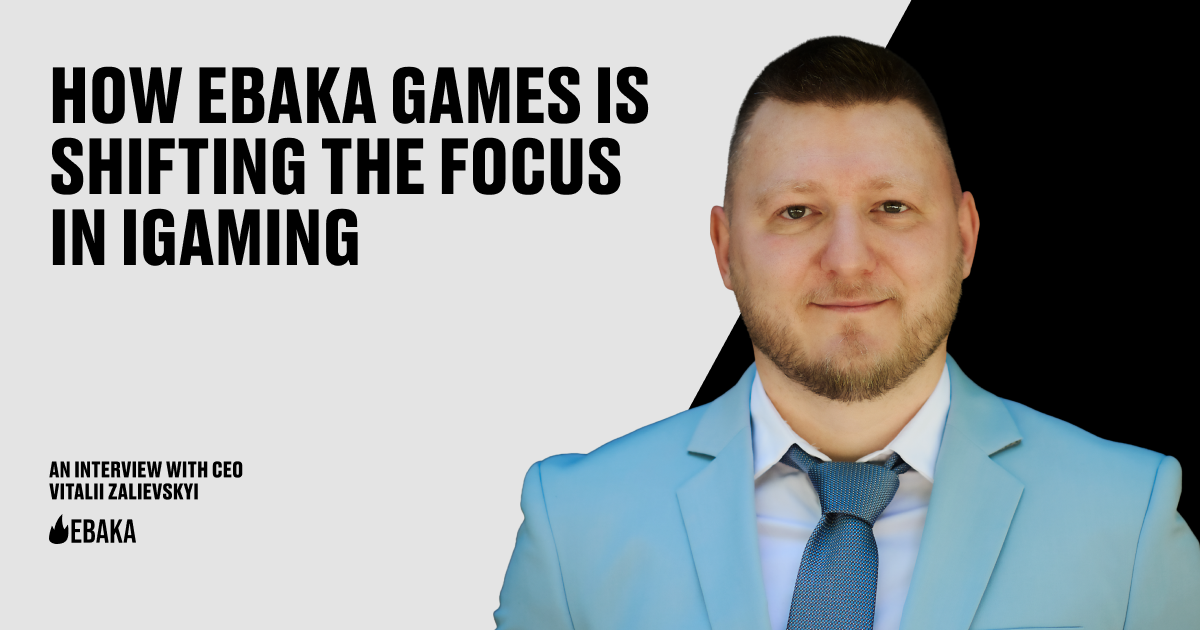
The role of a Product Owner might seem abstract — until you see it from the inside. In this Expert Talks interview, we explore how product management works at Already Media: how priorities are set, how the team operates, and what drives technical growth. Product Owner Yevhenii Taran shares his professional journey, how he works with the team, and what makes the product engine run behind the scenes.
Our prioritization isn’t just a list of tasks — it’s a tool that aligns the team’s actions with business goals
From SEO to Product Owner
Tell us a bit about your background. How did your career begin, and what led you to the role of Product Owner?
Before becoming a Product Owner, I started in digital marketing. I spent five years working as an SEO specialist in a performance marketing agency, growing from Junior to Team Lead. Later, I joined a Big Data department where we used large-scale data for optimizing major websites. After that, I worked for a year in a SaaS company that built tools for marketers and SEO professionals. I then spent a few years developing my own projects — launching and managing websites of various types, from review sites to large aggregators. I worked with investors and handled product strategy and development. One of those projects became a turning point — it’s where I met the team at Already Media. We connected quickly, and I joined the company as a Product Manager, making the full transition from SEO to product development.
What areas fall under your responsibility, and what’s your role in supporting and growing them?
I’m responsible for the development of internal products for teams across the company — including finance, HR, and admin. I also manage tools that support SEO units (link builders, content managers, and others), as well as solutions for the affiliate team. In particular, I oversee the development of our in-house affiliate tracking software — unmatched on the market in terms of functionality and automation. It’s one of our most complex and technically advanced products.
I also coordinate and ensure the stability of our technical development team. My key responsibilities include:
- Organizing the dev team’s work: task planning, retrospectives and product demos, load balancing, and cross-project prioritization.
- Working with stakeholders and users: gathering and processing feature requests, prioritization, timeline estimation, and roadmap planning.
- Presenting results: demoing final solutions to stakeholders.
- Occasionally taking on administrative tasks to support product operations.
How is the Product Owner role in the affiliate space different from classic B2C/B2B products? What are the unique challenges?
Traditional B2C/B2B products often rely on long-term and stable planning cycles. In affiliate, especially in our company, things are different: we plan in detail one quarter ahead, while our strategic planning focuses on broader product directions.This approach reflects our fast-paced environment — both the company and product portfolio are scaling rapidly. Flexibility is essential: we may need to reprioritize mid-quarter in response to new opportunities or changing conditions. That ability to adapt quickly is a key part of the Product Owner and tech team’s role at Already Media.
Product Insights: Prioritization, Syncs, and Releases
What do you use to prioritize — and how do you make tough calls during projects?
Prioritization is one of the most important tools for effective product work. It helps us allocate resources efficiently, manage risks, improve the user experience, and stay aligned with long-term business goals. At Already Media, we use a four-tier prioritization system:
- Critical — Tasks that break the system, cause data loss, or involve security and financial risks. These are urgent issues like outages or serious bugs. The team responds immediately.
- Major — Bugs or tasks that affect key functionality but don’t disable the system. These impact many users or present financial risks. High priority, included in the next release.
- Normal — Issues that aren’t critical but affect user experience or clarity. There’s usually a workaround. These are planned for the upcoming iterations.
- Minor — Cosmetic bugs or small improvements with little business impact. These are handled when resources allow.
As for tough decisions, the key is balancing urgency, business value, and team capacity. We don’t decide in isolation — we involve developers, stakeholders, and analysts if needed. A simple “impact/urgency” matrix can help, but strategic alignment always comes first.
How do you handle feature requests from teams? Do you use syncs, design reviews, demos, or product discovery?
We use a dedicated request form to collect feature ideas, bug reports, and improvement suggestions — this keeps everything organized and detailed from the start. I then review each request: clarify context, talk with the dev team, and gather follow-up questions. If the task needs deeper exploration, we run a product discovery phase — collect extra input, define goals and limits, and assess business value. This helps us find the best solution, not just fulfill the request. If there’s a visual or UX component, we hold a design review before development, discussing with designers and developers how to build it most effectively. Once we’re aligned, I organize a final call with the requestor. For complex projects involving multiple teams, we set up dedicated channels and regular syncs. After delivery, we hold a demo — presenting the result to the requestor and other teams if needed. This ensures feedback is collected and adjustments can be made early.
What helps you keep the team focused and aligned with business goals? Do you have techniques to speed up or simplify the process?
Focus comes from regular communication, clear goals, and consistent processes. We keep a steady work rhythm and gather feedback through retrospectives to improve our flow and team dynamics. To align business and dev goals, I involve engineers in strategic discussions. This gives them better insight into priorities and future plans. It’s especially useful when designing architecture — it prevents rework and helps build for scale.
Tactics that help us move faster:
- Clarifying requirements early — the clearer the input, the sooner we can start.
- Creating tight feedback loops between stakeholders and the team.
- Breaking tasks into logical stages so we can start working before all the details are finalized — this is crucial in a fast-paced setting.
How do you handle internal team feedback?
Feedback is vital for team development and process improvement. We hold regular retros where we ask:
- Continue — What’s working well and should be kept?
- Stop — What’s slowing us down or not helping?
- Invent — What can we improve in communication, tools, or workflows?
In addition to retros, I have monthly 1-on-1s with tech leads to talk about project status, hidden challenges, or personal matters. These meetings help uncover issues early, build trust, and keep morale strong.
What advice would you give yourself at the start of your product career — and what’s your biggest takeaway about team leadership?
Advice to my past self? Speak up!
Most problems can be solved — or avoided — with open, timely communication. Don’t hesitate to ask, clarify, or revisit agreements. Also, write everything down — decisions, agreements, even small details. It saves time and energy later. The biggest insight on team leadership:
Transparent processes and clear expectations turn a group of individuals into a high-performing team. It’s not about control — it’s about trust and consistency. When everyone knows what they’re doing and why — synergy happens.
Conclusion
From task planning to fine-tuned prioritization, from gathering feedback to syncing cross-team efforts — this article highlights the system that powers product growth at Already Media. In the next Expert Talk, we’ll explore how the full product strategy is built, how roles are divided, and why soft skills are just as important as frameworks in product work.

